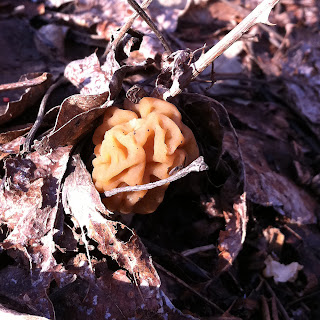Okay, so it's been awhile since I've done anything with this blog......But, I have been BUSY. Life is what happens when you're not sitting in front of a laptop. I digress though, and what I want to post here today is my adventure with growing an heirloom corn, grinding flour and ultimately making my own cornbread (with cracklin's).
In the past, corn has not really been my favorite crop. It can be a fussy germinator. It needs lots of space, water and further fussing. However, ever since reading Michael Pollan's "Omnivores dilemma" I have been intrigued by the fact that it is a "human-made" and also very much human reliant plant. Contemporary, GMO corn is also very much a manmade thing, but my interest here is with heirloom varieties that have come into being, not in a laboratory, but from millions of years of human meddling. It really is an interesting and beautiful plant.
I selected a red flour corn for this years crop. "Blood Brothers", is the result of crossing Aztec Black and I think Mandan Bride. I wouldn't really call it red, but rather red/purple, especially when dried, as pictured above.
I planted seed back in late April in roughly a 12' x 12' block. Instead of rows I staggered the seed hills so that they were about 18" apart in all directions. Three-four seeds per hill, later to be thinned to the one strongest per hill. Despite the cold Spring this year (again), they all did pretty well germinating.
One month old plants--or therabouts.
Blood brothers is a rather short corn. It only grew about 5-6 feet high. It produces well though. I harvested it in September and hung it to dry on the cob for about a month or so before twisting it off the cobs and further drying the seed in the dehydrator so that it was totally dry for grinding.
It took about 3-4 passes with the hand grinder to get a medium textured cornmeal. If I do this again, I think I may invest in an electric grain mill--though it is good exercise for ones arms!
Once ground, I decided to search the web for a good
Cracklin Cornbread recipe and since I still have a large quantity of nice organic, pastured pork fat in the freezer, I made my own cracklin's.
here is the cubed up fat, before rendering......
and after.....
The end result. Yummy little cracklins and rendered lard.
On to the cornbread making. Followed the recipe for the most part, except I didn't have any buttermilk so I added some vinegar to a cup of milk as a substitute. I was also able to use the lard that was rendered from the cracklin's instead of bacon fat.
The batter goes into a hot skillet with melted lard in it. Then into the oven.
The end result.
This ain't your momma's cornbread!
The actual color was difficult to capture, but it was very close to blue tortilla corn chips.
The outside edges were browned and very crisp and tasted a bit like corn dog batter.
The inside, moist and crumbly.
Overall, it had a really good flavor, perhaps a bit stronger and "cornier" that your average cornbread.
So, there it is.....
I plan on using the cornmeal for polenta as well.
I saved some seed for next year but have already found some new varieties that look interesting as well. Floriani Red Flint, and Oxacan Green Dent are amongst a a few that I may end up trying.


















































